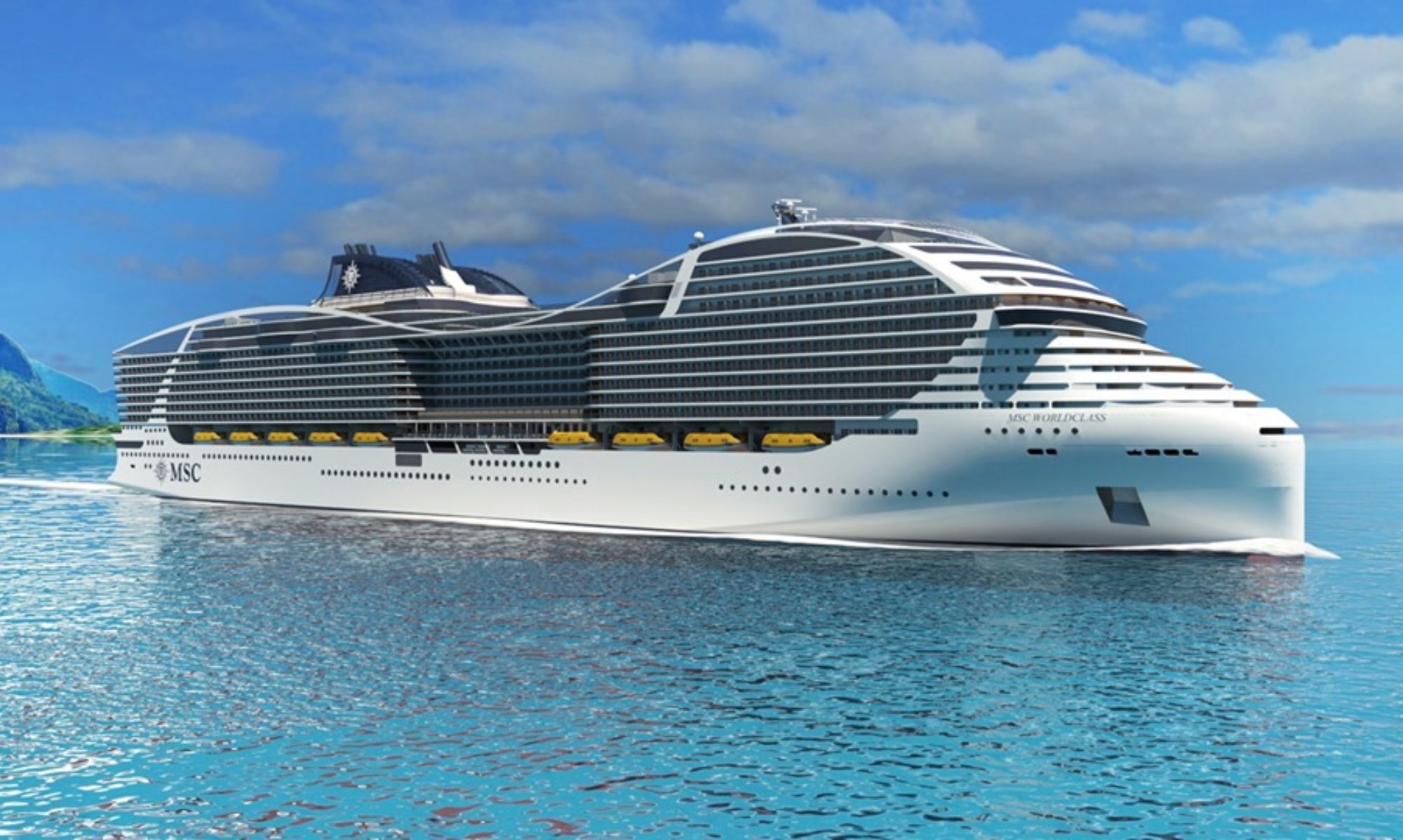
MSC Grandiosa was delivered on 31 October at the Chantiers de l’Atlantique (CdA) shipyard in Saint-Nazaire, France and is heavily equipped with a comprehensive range of leading-edge environmental technologies and other solutions as with this ship MSC Cruises marks another significant step in its journey towards zero-emissions operations.
MSC Grandiosa, which will be christened in the German city on 9 November features a state-of-the-art selective catalytic reduction (SCR) system which helps reduce nitrogen oxide emissions by 80 per cent through advanced active emissions control technology. Nitrogen oxide from the engine operations is conducted through a catalyst – a high-density device made from noble metals – and converts them into nitrogen and water, both harmless compounds.
MSC Grandiosa will also be fitted with shore-to-ship power which connects cruise ships while at berth to a port’s local power grid to further reduce the ship’s air emissions while in port to zero. This is a feature that has come as standard across all MSC Cruises new builds since 2017.
These new features add to other effective environmental technologies deployed on the ship and across the Company’s fleet to minimise and continuously reduce environmental impact, including: cutting-edge hybrid Exhaust Gas Cleaning Systems (EGCS) that remove up to 97 per cent sulphur oxide from ship emissions; advanced waste management and wastewater treatment systems; ballast water treatment systems; latest-technology systems for the prevention of oil discharges from machinery spaces and various state-of-the-art energy-efficiency improvements – from heat recovery systems to LED lighting.
The delivery ceremony of MSC Grandiosa on 31 October took place on the same day as a steel cutting ceremony of the liquified natural gas (LNG)-powered MSC Europa, the Company’s first ship from the new, futuristic World Class prototype which is set to join the fleet in May 2022 and one of a total of five LNG ships to be built for MSC Cruises.
MSC Cruises also unveiled on the same day a ground-breaking R&D project in conjunction with CdA, named PACBOAT, that will focus on the integration of a new fuel cell technology on board the LNG-powered MSC Europa. This is a groundbreaking technology, particularly apt for high-power marine operations and cruising in particular. It is also a testimony of the Company’s commitment to support the accelerated development of advanced environmental technologies for the benefit of its operations as well as the overall industry.
Currently, MSC Grandiosa and 10 other ships in MSC Cruises’ fleet of 17 ships are equipped for cleaner emissions with hybrid (closed-loop) EGCS. The line’s six other ships will be retrofitted with the technology by the end of 2023 and until then will rely on the use of low sulphur fuels to always fully comply with the strictest existing as well as new maritime regulations.
MSC Grandiosa will be deployed in the Western Mediterranean for the next 12 months before MSC Grandiosa is deployed to South America for winter 2020.
MSC Grandiosa’s environmental specifications:
Energy-efficient hull and overall design: 28 per cent less fuel compared to Fantasia Class ships (entered in service between 2008-2013) which represents a reduction of 255kg less carbon dioxide per passenger, per cruise.
Hydrodynamics: optimised hull design and latest generation azipods and propellers.
Hybrid Exhaust Gas Cleaning System (EGCS): 97 per cent less sulphur oxide through a system which can operate in closed loop.
Selective Catalytic Reduction system: 80 per cent less nitrogen oxide through active emissions control technology.
Shore-to-ship power: fully ready to connect to local power grid to reduce emissions while at berth in port.
Advanced waste management: comprehensive systems to reduce, recycle and reuse all waste aspects on board.
Ballast water treatment system: a system to avoid introducing invading species through ballast water.
Advanced wastewater treatment: the system treats wastewater to a very high quality and the end product is of a better standard than most shoreside municipal waste standards around the world.
Smart heating, ventilation and air conditioning system (HVAC): two high- and low-heat recovery loops to intelligently redistribute heat and cold from the laundry room and machinery spaces to warm up the swimming pools or other parts of the ship.
Trim Optimisation: a software application to monitor and optimise trim, the ship’s stability, in real-time. This technology supports ship officers to keep the vessel’s trim optimised to reduce fuel consumption and optimise performance.
Energy-saving LED lighting: all MSC Cruises ships use only energy efficient LED and fluorescent lighting.
Hull paints: the hulls of all MSC Cruises’ ships are coated with special environmentally-friendly paints which impede the growth of barnacles, algae and marine organisms in order to reduce drag significantly.
MSC Grandiosa’s other specifications:
Ship name: MSC Grandiosa
Ship class: Meraviglia-Plus
Delivery date: 31 October 2019
Gross tonnage: 181,000
Lower berth capacity: 4,842
Total number of passengers: 6,334
Crew members: 1,704
Number of cabins: 2,421
Length / Beam / Height: 331.43 m / 43 m / 65 m
Maximum speed: 22.3 knots






